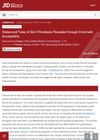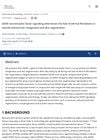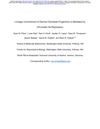Search
forLearn
5 / 8 resultslearn Osteopontin
signaling protein that, when suppressed, may grow hair by reducing inflammation and stem cell loss
learn Epidermal Growth Factor
learn Follistatin
glycoprotein that inhibits TGF-β and promotes hair growth by antagonizing activin
learn Thymosin Beta 4
Research
5 / 1000+ results
research States and Fates of Skin Fibroblasts Revealed Through Chromatin Accessibility
Newborn skin cells can change into wound-healing cells more easily than adult ones, which might explain why baby skin heals without scars. Understanding this could help treat chronic wounds and prevent scarring.

research GDNF Neurotrophic Factor Signaling Determines the Fate of Dermal Fibroblasts in Wound-Induced Hair Neogenesis and Skin Regeneration
GDNF signaling helps in hair growth and skin healing after a wound.

research Lineage Commitment of Dermal Fibroblast Progenitors Is Mediated by Chromatin De-repression
Skin cell types develop when specific genes are turned on by removing certain chemical tags from DNA.

research CXCL12 Drives Reversible Fibroimmune Remodeling in Androgenetic Alopecia Revealed by Single-Cell RNA Sequencing
Blocking CXCL12 can reverse hair loss and fibrosis in androgenetic alopecia.
research Distinct Regulatory Programs Control the Latent Regenerative Potential of Dermal Fibroblasts During Wound Healing
Dermal fibroblasts have adjustable roles in wound healing, with specific cells promoting regeneration or scar formation.
Community Join
5 / 1000+ results
community Compressed part of research of theory of androgenic/anabolitic balance. AGA h-responders analytic. Theory of physio-metabolitic method of anti AGA treatment
The treatment for androgenetic alopecia involves using finasteride and minoxidil with intense exercise and cold exposure to boost metabolism and reduce androgenic effects, potentially leading to hair regrowth. This approach may activate biological pathways for improved hair and overall health.
community I started rapidly diffuse thinning at 22. I'm 42 now and have as much hair as I did at 16. AMA
Hair loss treatments like finasteride, minoxidil, ketoconazole, PRP, and microneedling helped maintain hair for 20 years. Research and try evidence-based treatments for best results.
community Polydopamine Synergizes with Quercetin Nanosystem to Reshape the Perifollicular Microenvironment for Accelerating Hair Regrowth in Androgenetic Alopecia.
A quercetin-encapsulated and polydopamine-integrated nanosystem (PDA@QLipo) shows promise for treating androgenetic alopecia by reshaping the perifollicular microenvironment, outperforming minoxidil in hair regeneration. The nanosystem promotes cell proliferation, hair follicle renewal, and recovery by scavenging reactive oxygen species and enhancing neovascularity.
community Scientists May Have Accidentally Found a Way to Reverse Hair Loss Without Drugs
2-deoxy-D-ribose is being explored as a hair loss treatment but is not proven effective in humans and may be costly and inconvenient. Minoxidil remains the most effective treatment.
community 8 years of hair loss, turning 30 next month
The user has been dealing with hair loss for 10 years, worsened by psoriasis, and uses minoxidil and finasteride. They seek advice on managing psoriasis and hair loss, with suggestions to see a dermatologist, try different shampoos, and be patient.